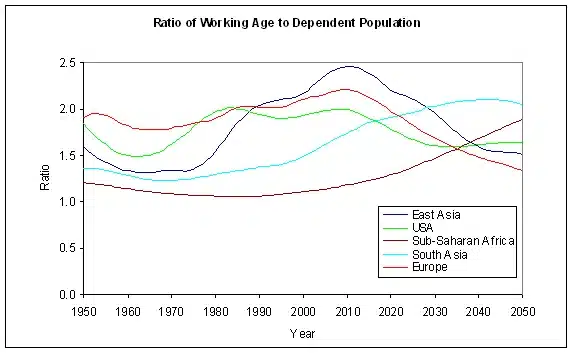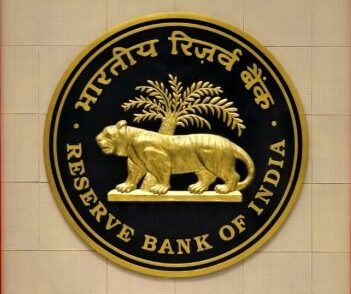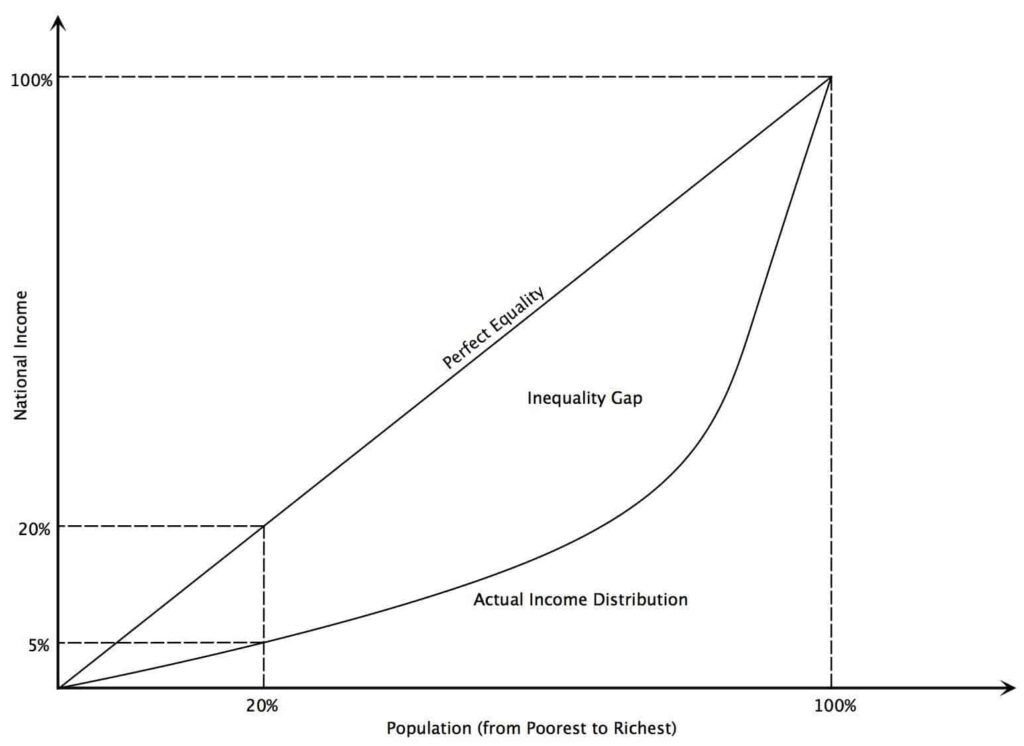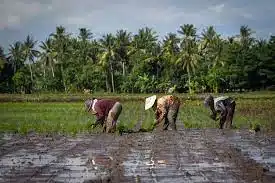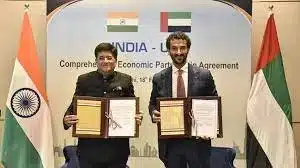WIPO, TRIPS, and IPR
What is IPR?
IPR refers to the creations of minds such as inventions, literary and artistic work, designs and symbols, names, and images in commerce.
Rights on IPR means providing property rights through patents, copyrights, and trademarks.
The importance of IPR was first recognized in the
- Paris Convention for the Protection of Industrial Property (1883) &
- Berne Convention for the Protection of Literary & Artistic Works (1886).
Both are administered by the World Intellectual Property Organization (WIPO).
- IPRs have been outlined in Article 27 of the Universal Declaration of Human Rights.
- WTO governs IPR through Trade-Related Aspects of Intellectual Property Rights (TRIPS).
What is a patent?
A patent is an exclusive right granted for an invention, which is a product or a process that provides, in general, a new way of doing something, or offers a new technical solution to a problem. To get a patent, technical information about the invention must be disclosed to the public in a patent application.
- The history of Patent law in India starts from 1911 when the Indian Patents and Designs Act, 1911 was enacted.
- The Patents Act, 1970 is the legislation that till date governs patents in India. It first came into force in 1972.
- The Office of the Controller General of Patents, Designs and Trade Marks or CGPDTM is the body responsible for the Indian Patent Act.
- The Patent Office has its headquarters in Calcutta and has branches in New Delhi, Chennai and Mumbai. The office of the CGPDTM is based in Mumbai. Nagpur hosts the office of the Patent Information System and also the National Institute for Intellectual Property Management.
- The Controller General supervises the Act’s administration and also offers advice to the government on related matters.
- The Patents Act has been repeatedly amended in 1999, 2002, 2005, 2006 respectively. These amendments were required to make the Patents Act TRIPS compliant. TRIPS stands for Trade-Related Aspects of Intellectual Property Rights.
- The major amendment in the Patent Act was in 2005, when product patents were extended to all fields of technology like food, drugs, chemicals and microorganisms. The Rules under Patent Act were also amended in 2012, 2013, 2014, and 2020.
Criteria for Issuing Patents in India
- Novelty: It should be new (not published earlier + no prior Public Knowledge/ Public Use in India)
- Non-obviousness: It must involve an inventive step (technical advanced in comparison to existing knowledge + non‐obvious to a person skilled in the relevant field of technology)
- Industrial use: It should be capable of Industrial application
- Patents in India are governed by “The Patent Act 1970” which was amended in 2005 to make it compliant with TRIPS.
What cannot be patented?
- Frivolous Invention: Invention that harms public order/Morality/ health of animals, plants & humans
- Methods of agriculture or horticulture
- Traditional Knowledge
- Computer Program
- Inventions related to Atomic Energy
- Plants & Animals
- Mere discovery of scientific principle
Patent Law Amendment Act 2005
Salient features of the Patents (Amendment) Act 2005 related to product patents:
- Extension of product patent protection to products in sectors of drugs, foods and chemical.
- Term for protection of product patent shall be for 20 years.
- Introduction of a provision for enabling grant of compulsory license for export of medicines to countries which have insufficient or no manufacturing capacity; provided such importing country has either granted a compulsory license for import or by notification or otherwise allowed importation of the patented pharmaceutical products from India (in accordance with the Doha Declaration on TRIPS and Public Health)
- Section 3 (d) regarding patentability.
Effects of Patent Amendment Act 2005
- Due to the new patent regime, increased prices of products was considered to be a major hindrance during the time. However, the government has taken proactive measures to ensure low prices for essential drugs, and has used compulsory licensing as a tool to keep exorbitant prices under check.
- The amendment intended to make Indian drug and pharmaceutical industries competitive at par with multinational companies.
- Despite initial reservations, Indian pharmaceutical companies manufacturing generic drugs have flourished in the last decade.
- Also, MNCs have opened Research and Development Centres in India.
Patent (Amendment) Rules, 2020
- The central government has published an amended Patent (Amendment) Rules, 2020.
- The new rules have amended the format of a disclosure statement that patentees & licensees are required to annually submit to the Patent Office.
- The format contains disclosing the extent to which they have commercially worked or made the patented inventions available to the public in the country.
- The disclosure is to be made in the Form 27 format as prescribed under the Patent Rules, 2003.
- The patentees & licensees as well as the Patent Office have blatantly disregarded this statutory requirement.
- There has been significant pressure from MNCs & the U.S. to do away with this requirement.
Criticism of Patent (Amendment) Rules, 2020
- The amendment has significantly weakened the requirement of submitting information in the disclosure.
- This could hamper the effectiveness of India’s compulsory licensing regime which depends on full disclosure of patent working information.
- This in turn could hinder access to vital inventions including life-saving medicines.
What is copyright?
Copyright (or author’s right) is a legal term used to describe the rights that creators have over their literary and artistic works. Works covered by copyright range from books, music, paintings, sculpture, and films, to computer programs, databases, advertisements, maps, and technical drawings.
- Copyrights in India are governed by “The Copyright Act, 1957”.
- Copyright is a legal term used to describe the rights that creators have over their literary & artistic works.
- Works covered by copyright range from books, music, paintings, sculpture & films, to computer programs, databases, advertisements, maps & technical drawings.
What is a trademark?
A trademark is a sign capable of distinguishing the goods or services of one enterprise from those of other enterprises. Trademarks are protected by intellectual property rights.
- Trademarks date back to ancient times when artisans used to put their signature or “mark” on their products.
- Trademarks in India are governed by Trade Marks Act 1999 which was amended in 2010.
What is an industrial design?
In a legal sense, an industrial design constitutes the ornamental aspect of an article.
An industrial design may consist of three dimensional features, such as the shape of an article, or two dimensional features, such as patterns, lines or color.
Industrial designs in India are governed by “The Designs Act 2000”.
What is a geographical indication?
A geographical indication (GI) is a sign used on products that have a specific geographical origin and possess qualities or a reputation that are due to that origin. In order to function as a GI, a sign must identify a product as originating in a given place. In addition, the qualities, characteristics or reputation of the product should be essentially due to the place of origin. Since the qualities depend on the geographical place of production, there is a clear link between the product and its original place of production.
- A GI tag is a legal recognition given primarily to an agricultural, natural or a manufactured product (handicrafts & industrial goods) originating from a definite geographical territory.
- GI tag conveys an assurance of quality & distinctiveness of a product, which is essentially attributable to the place of its origin.
- Most commonly, a geographical indication includes the name of the place of origin of the goods.
- Once the GI protection is granted, no other producer can misuse the name to market similar products.
- It also provides comfort to customers about the authenticity of that product.
- Geographical Indicators in India are governed by “The Geographical Indications of Goods (Registration & Protection) Act, 1999”.
What is a trade secret?
Trade secrets are intellectual property (IP) rights on confidential information which may be sold or licensed.
In general, to qualify as a trade secret, the information must be:
- commercially valuable because it is secret,
- be known only to a limited group of persons, and
- be subject to reasonable steps taken by the rightful holder of the information to keep it secret, including the use of confidentiality agreements for business partners and employees.
The unauthorized acquisition, use or disclosure of such secret information in a manner contrary to honest commercial practices by others is regarded as an unfair practice and a violation of the trade secret protection.
Difference between Patent and Copyrights
| Patent | Copyrights |
|---|---|
| Patent gives the designer complete rights over the idea in whichever form it is used. | Copyrights on the other hand given for a work in particular form like a book, an audio and only that exact reproduction, example cut and paste of text falls under its ambit. |
| It requires compulsory registration. | Does not require a registration, once the work is created it is a property of the author. |
| Patent rights are thus usually given for a brief period say 20 years. | The rights are given for the entire lifetime of the author and extend for 50 years even after the death of the producer. |
Difference between a Geographical Indication (GI) & a Trademark
- A trademark is a sign/word/phrase used by an entity to distinguish its goods & services from those of others.
- A geographical indication tells consumers that a product is produced in a certain place & has certain characteristics that are due to that place of production.
- A trademark gives the entity the right to prevent others from using the trademark.
- On the other hand, GI may be used by all producers who make their products in the place designated by a geographical indication.
Plant Variety Protection
- It refers to the protection granted for plant varieties.
- These rights are given to the farmers & breeders to encourage the development of new varieties of plants.
- Plant variety protection in India is governed by “The Protection of Plant Varieties & Farmers’ Rights (PPV&FR) Act, 2001”.
National IPR Policy, 2016
- The Policy aims to push IPRs as a marketable financial asset, promote innovation & entrepreneurship while protecting public interest.
- The plan will be reviewed every five years in consultation with stakeholders.
- To have strong & effective IPR laws, steps would be taken — including review of existing IP laws — to update & improve them or to remove anomalies & inconsistencies.
- The policy is entirely compliant with the WTO’s agreement on TRIPS.
- Department of industrial policy & promotion (DIPP) is the nodal agency for all IPR issues.
- The policy retains the provisions on Compulsory Licensing (CL) as well as preventing ever-greening of drug patents (Section 3(d) of India’s Patents Act).
- Under Indian Patents Act, a CL can be issued for a drug if the medicine is deemed unaffordable, among other conditions, & the government grants permission to qualified generic drug makers to manufacture it.
CIPAM
(Cell for IPR Promotion & Management) has been created as a professional body under the aegis of DPIIT to take forward the implementation of the National IPR Policy 2016.
Functions:
- CIPAM is working towards creating public awareness about IPRs in the country,
- Promoting the filing of IPRs through facilitation.
- Providing inventors with a platform to commercialize their IP assets &
- Coordinating the implementation of the National IPR Policy in collaboration with Government Ministries/Departments & other stakeholders.
TRIPS:
TRIPS- It refers to the ‘Trade-Related Aspects of Intellectual Property Rights Agreement,’ which sets standards for the entire scope of Intellectual Property Rights, including applying said standards, with the help of administrative and legal actions.
TRIPS is an international agreement on intellectual property rights.
The Agreement covers most forms of intellectual property including
- patents,
- copyright,
- trademarks,
- geographical indications,
- industrial designs,
- trade secrets, &
- exclusionary rights over new plant varieties.
It came into force in 1995 & is binding on all members of the World Trade Organization (WTO).
Characteristics of TRIPS:
1. Standards: TRIPS establishes the basic standards of protection to be achieved by every country in providing so to their creators.
2. Enforcement: This feature specializes in the procedures and regulations adopted, including the enforcement of intellectual property rights and how to deal with them.
3. Dispute Resolution: TRIPS agreement settles disputes between WTO member countries concerning TRIPS obligations on every member country, provided that it is subject to the WTO’s settlement of dispute procedures.
Concerns of TRIPS:
1. Implementation of basic principles of the trading system, including international IPR agreements.
2. Methods adopted for the proper safeguarding of IPRs.
3. Proper implementation of rights in territories.
4. Resolving disputes on IPRs between the member nations of the World Trade Organization.
5. Transitional agreements occur when a new system/policy is introduced.
Duties of TRIPS:
1. TRIPS has made it compulsory for member nations to grant patents for inventions and processes in all fields indefinitely. The invention satisfies the tests of industrial applicability, novelty, and non-obviousness.
2. It has mandated microorganism patents, microbiological and non-biological patents.
3. It has limited the exclusion a member nation is allowed to make.
4. Ensuring the safeguarding and enforcement of intellectual property rights promotes innovation in various fields and aids in the economy’s flourishing.
| 1. | Patents | Given to new product and process. | Patent acts, 1970 | DPIIT, Ministry of Commerce | Period 20 years |
| 2. | Trademarks | Given to a name, word, phrase, logo, symbol, design, image, or combination of these elements. | Trademark act, 1999 | DPIIT, Ministry of Commerce | Period 10 years |
| 3. | Geographical Indication | It is a sign used on products that have a specific geographical origin and possess qualities or a reputation that are due to that origin. | Geographical Indication of Goods (Registration and protection) Act, 1999. | DPIIT, Ministry of Commerce | Period 10 years |
| 4. | Copyrights | It is a bundle of rights given by the law to the creators of literary, dramatic, musical, and artistic works and the producers of cinematograph films and sound recordings. | Copyright Act 1957 | Copyrights Office, MoHRD | Period 60 years. |
| 5. | Designs | It may consist 3D features such as shape of an article or 2D feature such as Patterns, lines, or colour. | Design Act, 2000 | DPIIT, Ministry of Commerce | Period 10 years (5 grace years) |
| 6. | Plant Variety Protection | Protection granted for plant varieties. These rights are given to the farmers and plant breeders to encourage the development of new varieties of plants. | Protection of Plant varieties and farmers’ right act, 2011. | Ministry of Agriculture | 15 years to field crops & 18 years to Trees and vines. |
| 7. | Semi-conductors and integrated layouts | Semi-conductor layout design means a layout of transistors and other circuitry elements and expressed in any manner in semi-conductor integrated circuits. | Semi-conductors and integrated layouts design act, 2000 | Department of electronics and IT, Ministry of Communication, and IT. | 10 years |
Protection of Plant Varieties & Farmers’ Rights (PPVFR) Act, 2001
- PPVFR Act, 2001 has been enacted in India for giving effect to the TRIPS Agreement.
- The PPVFR Act retained the main spirit of TRIPS viz., IPRs as an incentive for technological innovation.
- However, the Act also had strong provisions to protect farmers’ rights.
- The act allows farmers to plant, grow, exchange & sell patent-protected crops, including seeds, & only bars them from selling it as “branded seed”.
- It recognised three roles for the farmer: cultivator, breeder & conserver.
- As cultivators, farmers were entitled to plant-back rights.
- As breeders, farmers were held equivalent to plant breeders.
- As conservers, farmers were entitled to rewards from a National Gene Fund.
After joining WTO in 1995, the choice before India was to either enact a law or to accept the plant breeders’ rights given by the International Union for Protection of New Plant Varieties (UPOV Convention).
UPOV option was earlier rejected because it denied the farmers the freedom to re-use farm-saved seeds & to exchange them with their neighbours.However, in 2002, India joined the UPOV convention.
Objectives of the PPVFR Act
- Facilitate an effective system for the protection of plant varieties & the rights of farmers.
- Encourage the development of new varieties of plants.
- Protect the rights of the farmers in respect of their contribution in conserving plant genetic resources.
- Facilitate the growth of the seed industry which will ensure the availability of high quality seeds.
Criticism of PPVFR Act, 2001
- Discourages research & innovation: The PPVFR Act allows farmers to use patented varieties & hence private companies are not keen to bring new technology.
- India neither invests in the public sector nor respects private & foreign players’ IPR (bad for business).
IPR Issues
Patent Evergreening Prevention
- One of the most important intellectual property rights issues challenges is the prevention of the evergreening of the patents for multinational companies.
- Evergreening is strategy for extending the term of granted patent which is about to expire without increasing therapeutic efficacy in order to retain royalties.
- As we know, the companies cannot evergreen their patents simply by making minor changes.
- So, section 3(d) in the Indian Patent Act (IPA) possess as one of the biggest issues with regards to IPR.
- This act bars the grant of patents to new forms of substances.
- This has discouraged investments from western countries.
Subsidies & IPR Issues
- A major form of subsidies includes food subsidy, fertilizer subsidy, education subsidy, etc.
- For the complete implementation of TRIPS agreements, one needs to reduce or eliminate these subsidies.
- Thus, GOI needs to create a balance between providing subsidies & providing IP rights in India.
The Product Patents Process
- A product patent protects a product.
- It offers high protection to the original inventor to reduce the competition for the same product.
- Whereas a process patent protects the process through which one manufactures the product & not the product.
- It reduces the element of monopoly in the market.
- As India is a part of the TRIPS agreement, the agreement requires all its members to shift their patent regime from process to product patent.
- This remains a challenge for India, as process patent would be more helpful to a country like India.
- This is since India is a developing country & ordinary people are struggling with basic necessities like food.
Protecting traditional knowledge
- Traditional knowledge, especially in the field of medicine, is like a gold mine.
- GOI is bound to protect traditional knowledge by not allowing MNC’s to get patents on traditional culture.
- Above all, the government has created a Traditional Knowledge Digital Library (TKDL) to prevent the patenting of traditional knowledge.
- So, this is one of the intellectual property rights issues in India.
Compulsory Licensing & Drug Price Control Order
- One of the most important intellectual property rights issues that the government needs to address is the use of compulsory licensing.
- Compulsory licenses are authorizations given to a third-party by the Government to make, use or sell a particular patented product without the need of the permission of the patent owner.
- The provisions regarding compulsory licenses are given in the Indian Patents Act, 1970 & in the TRIPS (Trade-Related Aspects of Intellectual Property Rights) Agreement.
- It is a relaxation available to the developing countries under the TRIPS agreement, something which organizations misuse sometimes.
- Moreover, under section 84 of the IPA, a company can acquire a compulsory license for “private commercial use” under certain circumstances.
- With the Drug Price Control Order, the company needs to justify the price of the drug with regards to investments.
- If someone plays foul, then the government has the right to intervene.
- Multinationals are asking the government to revoke this provision.
- However, the government is not ceding the demands to protect the interest of the masses.
Some other issues
- Trademark Violations: India has very high level of trademark counterfeiting against which the authorities in India do not take proper actions.
- Enforcement of IPR regulations is quite weak in the country because of two important reasons
- India is key exporter of counterfeit fake products such as foodstuffs, textiles, shoes, electronics etc
- Judicial delays in IPR disputes
- India maintains high custom duties on IP intensive products as advocated by western countries impacting the investment (US puts India into priority watch list i.e., special 301 report).
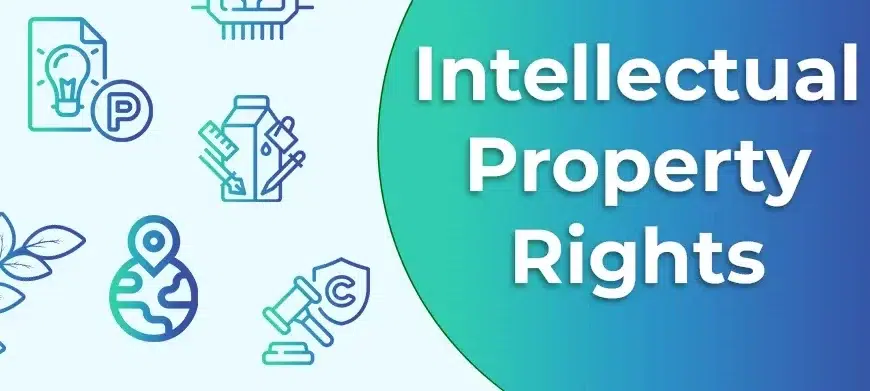
About WIPO:
The World Intellectual Property Organization (WIPO) is one of the 17 specialized agencies of the United Nations. Reference is sometimes made to 15 Specialized Agencies because the World Bank Group, which is now treated as one organization, is composed, in part, of three Specialized Agencies. WIPO’s activities include hosting forums to discuss and shape international IP rules and policies, providing global services that register and protect IP in different countries, resolving transboundary IP disputes, helping connect IP systems through uniform standards and infrastructure, and serving as a general reference database on all IP matters.
- WIPO was created in 1967 “to encourage creative activity, to promote the protection of intellectual property throughout the world.”
- Intellectual property (IP) is a category of property that includes intangible creations of the human intellect and primarily encompasses copyrights, patents, and trademarks.
- It also includes other types of rights, such as trade secrets, publicity rights, moral rights, and rights against unfair competition.
- It has currently 193 member states, administers 26 international treaties, and is headquartered in Geneva, Switzerland.
- Palestine has observer status.
- India is a member of WIPO and party to several treaties administered by WIPO.
- Every year World Intellectual Property Day is celebrated on the 26th of April.
History of WIPO
| 1883 — Paris Convention for the Protection of Industrial property | First step taken to protect intellectual work in other countries.It covers:Inventions(patents),Trademarks,Industrial Designs. |
| 1886 — Berne Convention | For the Protection of Literary and Artistic Works.It covers:Novels, short stories, poems, plays;Songs, opera, musicals;Drawings, paintings, sculptures, architectural works. |
| 1891 — Madrid Agreement | The first international IP filing service is launched. |
| 1893 — BIRPI established | Two secretariats set up to administer the Paris and Berne Conventions combine to form the United International Bureaux for the Protection of Intellectual Property (BIRPI). |
| 1970 — BIRPI becomes WIPO | WIPO becomes a member state-led intergovernmental organization. |
| 1974 — WIPO joins the United Nations | WIPO become one of the agencies of UN. |
| 1978 — Patent Cooperation Treaty (PCT) system launched | By filing one international patent application under the PCT, applicants can simultaneously seek protection for an invention in a very large number of countries. |
| 1994 — Arbitration and Mediation Centre (AMC) established | The Centre offers alternative dispute resolution services to help solve international commercial disputes between private parties. |
WIPO’s Mandate
‘WIPO is dedicated to developing a balanced and accessible international Intellectual Property (IP) system, which rewards creativity, stimulates innovation and contributes to economic development while safeguarding the public interest.’
Functions of WIPO
The World Intellectual Property Organisation (WIPO) was established with the intent to perform the following functions:
- To assist the development of campaigns that improve IP Protection all over the globe and keep the national legislations in harmony.
- Signing international agreements related to Intellectual Property Rights (IPR) protection.
- To implement administrative functions discussed by the Berne and Paris Unions.
- To render legal and technical assistance in the field of IP.
- To conduct research and publish its results as well as to collect and circulate information.
- To ensure the work of services that facilitate the International Intellectual Property Protection.
- To implement other appropriate and necessary actions.
Limitations and Exceptions
- In order to maintain an appropriate balance between the interests of rightholders and users of protected works, copyright laws allow certain limitations on economic rights.
- These are cases in which protected works may be used without the authorization of the rightholder and with or without payment of compensation.
- Limitations and exceptions is an issue considered in the agenda of the WIPO.
- The debate has been focused mainly on three groups of beneficiaries or activities in relation to exceptions and limitations – on educational activities, on libraries and archives and on disabled persons, particularly visually impaired persons.
WIPO Treaties
| Name | Purpose | Has India Acceded/Ratified? |
| WIPO Performance and Phonograms Treaty | Deals with the rights of two kinds of beneficiaries, particularly in the digital environment:performers (actors, singers, musicians, etc.); andproducers of phonograms (persons or legal entities that take the initiative and have the responsibility for the fixation of sounds). | India has acceded to this agreement. |
| Budapest Treaty | International Recognition of the Deposit of Microorganisms for the Purposes of Patent Procedure. | India has acceded to the treaty. |
| Madrid Protocol for the International Registration of Marks | Provides for the international registration of trade marks by way of one application that can cover more than one country. | India has acceded to the protocol. |
| Marrakesh Treaty to Facilitate Access to Published Works by Visually Impaired Persons and Persons with Print Disabilities | The treaty allows for copyright exceptions to facilitate the creation of accessible versions of books and other copyrighted works for visually impaired persons. | India has ratified the treaty. |
| WIPO Copyright Treaty | A special agreement under the Berne Convention which deals with the protection of works and the rights of their authors in the digital environment. | India has acceded to the treaty. |
Is India a member of WIPO?
- Yes, India is a member of the World Intellectual Property Organisation (WIPO).
- India joined the organization in 1975.
WIPO and India
India joined the WIPO in 1975.
India is a part of the following WIPO Treaties:
- IPO Convention (1975)
- Paris Convention (1998)
- Berne Convention (1928)
- Patent Cooperation Treaty (1998)
- Phonograms Convention (1975)
- Nairobi Treaty (1983)
- Nice Agreement (2019)
- Locarno Agreement (2019)
- Vienna Agreement (2019)
India acceded to all of the above treaties. India was the first country to ratify the Marrakesh Treaty.
World Intellectual Property rights Organization (WIPO)’s Marrakesh Treaty aims to help visually challenged people to access copyrighted books.
Salient features:
- Copyright doesn’t apply IF book is reproduced for visually challenged (VC) people i.e. in Braille language, audiobooks etc.
- Even permits cross-border exchange and translation of such books for the benefit of VC.
BUT with conditions:
- Only IF the given organization / person is doing it for non-profit purpose. They can only charge the cost of production.
- They’ll have to get license from respective national Copyright Boards.
- Will come into force when 20 WIPO Member nations ratify this treaty.
India’s stand
- 2012: We already amended Copyright act to give exceptions to visually challenged people.
- 2014: We signed Marrakesh Treaty
- We’ve promised WIPO to ratify this treaty in our parliament soon.
- Will permit translation of copyrighted books in all 22 official Indian languages – for the benefit of VC. They’ll be distributed to educational institutions & libraries
- Even private sector has come forward. TATA Consultancy Services (TCS) developed online platform to aid in online distribution of such books.
Publications of WIPO
- Global Innovation Index – an annual ranking of countries by their capacity for, and success in, innovation.
- The index ranks countries based on 80 indicators, ranging from intellectual property filing rates to Research and Development, online creativity, mobile application creation, computer software spending, education spending, scientific & technical publications and ease of starting a business.
- It is published in association with Cornell University and INSEAD.
Also, refer :
- Different shapes of economic recovery
- Top 50 Science MCQs For Competitive Exams
- Top 4 Important Curves In Economics


